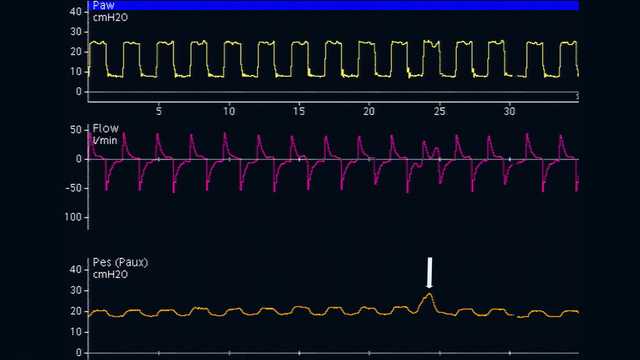
作者: Jean-Michel Arnal,高级医师,Sainte Musse 医院,Toulon,法国
日期: 19.10.2018
Last change: 09.09.2020
Formatting最近的一项生理学研究表明,食道压可估计在所有 PEEP 水平下胸中部的胸腔压。因此,食道压的绝对测量值有利于设置 PEEP 和监测跨肺压。

那么如何正确测量食道压呢?
食道气囊必须正确放置和充气,然后验证放置是否正确。
食道气囊的最佳位置是食道下三分之一处,距离鼻孔 35–45 cm。在病人处于半仰卧位的情况下,首先将空气囊插入胃中,其位于距离鼻孔约 50–60 cm 处。将气囊充气至标准容量(Cooper Surgical 导管为 1 ml,Nutrivent 导管为 4 ml)。无论是被动呼吸还是自主呼吸的病人,在吸气过程中胃压都显示正偏移。通过轻轻手动按压上腹部来确定胃的位置,此操作显示胃压立即增加(见图 1)。

然后,在气囊仍然充气的情况下轻轻回撤食道导管,以便将气囊放置在食道下三分之一处。在从胃压(见图 2)到食道压(见图 3)的变化过程中,出现压力波形的基线变化和心脏振荡。
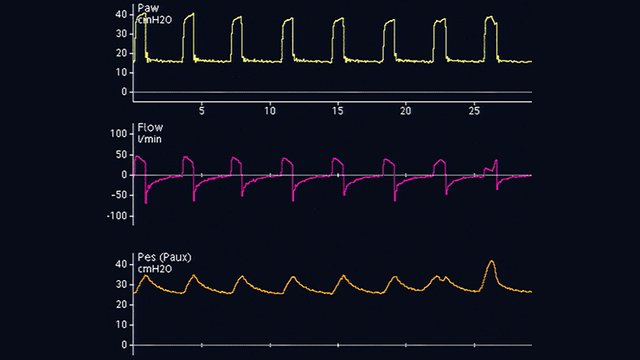
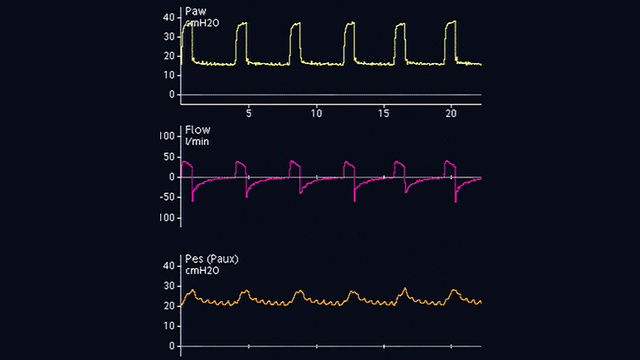
被动型病人在吸气过程中显示食道压正偏移(见图 4),但自主呼吸病人显示负偏移(见图 5)。如果心脏振荡使食道压信号变形,您可以再将导管回撤 2–5 cm。
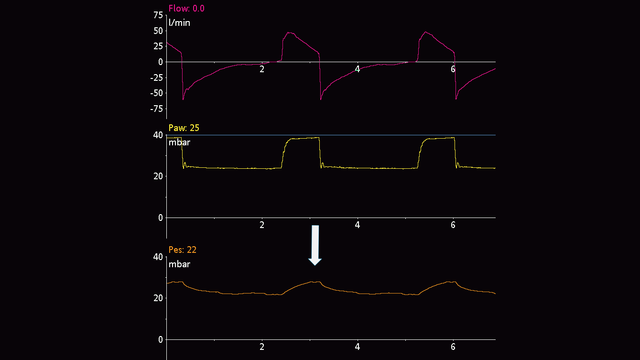
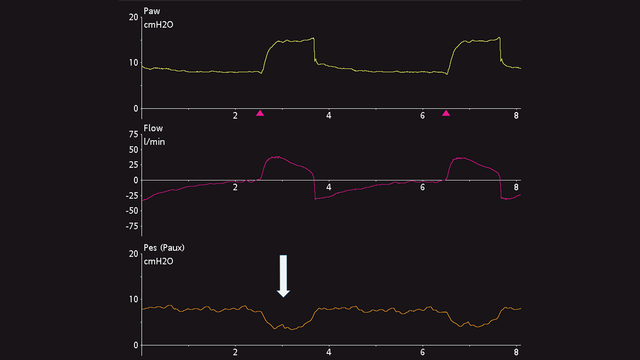
气囊充分充气所需的空气容量应单独滴定。只可能在被动型病人中进行此操作。根据 Mojoli 等人 (2016) 提出的方法,Cooper Surgical 导管气囊以 0.5 ml 步幅从 0.5 ml 逐渐充气至 3 ml,Nutrivent 导管气囊以 1 ml 步幅从 1 ml 逐渐充气至 8 ml(见图 6)。在气囊渐进充气过程中,食道压的基线增加,食道压偏移的幅度改变。充分的充气容量与食道压最大偏移相关。如果两个不同的充气容量显示相同幅度的食道压偏移,则选择最低的充气容量。
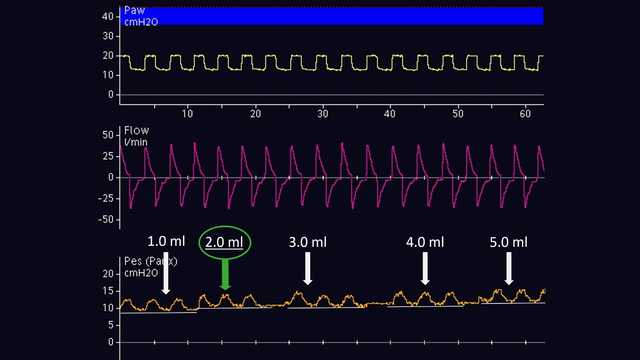
一旦气囊在食道中正确放置并充气,就通过闭塞试验进行验证。其原理是在呼气末关闭气道以改变气道压力,然后验证食道压的变化量是否相同。
在被动型病人中,您可以执行呼气末闭塞。当呼气阀关闭时,外部手动按压胸腔两侧的胸廓,以观察气道和食道压力的正偏移。气道和食道压力增加的幅度应该相同。换言之,跨肺压不应改变(见图 7)。
在主动型病人中,动态闭塞试验也采用呼气末闭塞。无需手动按压胸部,因为病人在闭塞期间会自发吸气。结果是气道和食道压力负偏移。气道和食道压力下降的幅度应相同,即跨肺压不应改变(见图 8)。
如果您想持续监测食道压,则务必重新评估正确的位置和充气容量。
完整引文如下: (
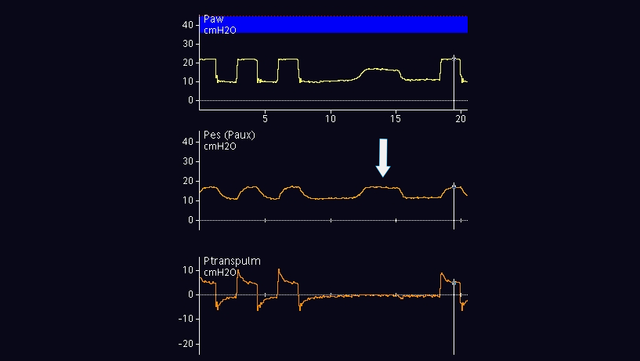
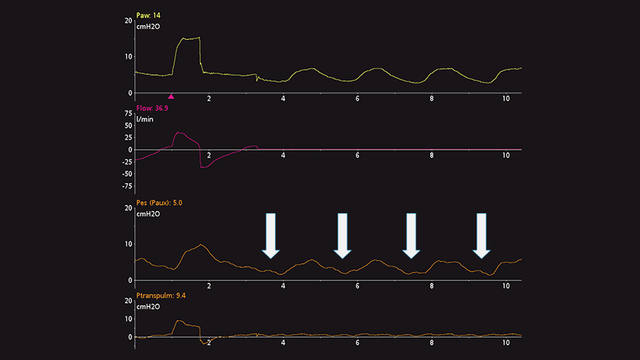
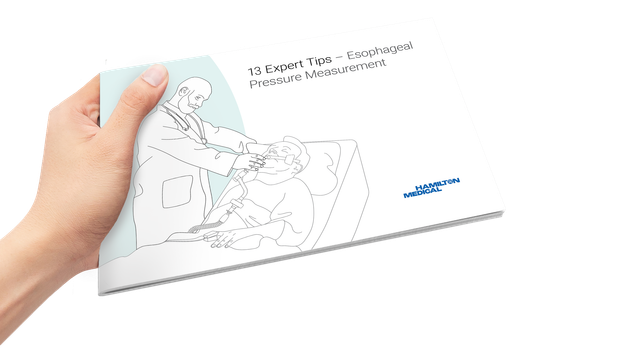
关于在 ARDS 病人中使用食道压力时应该做什么和应该避免什么的临床验证的建议。